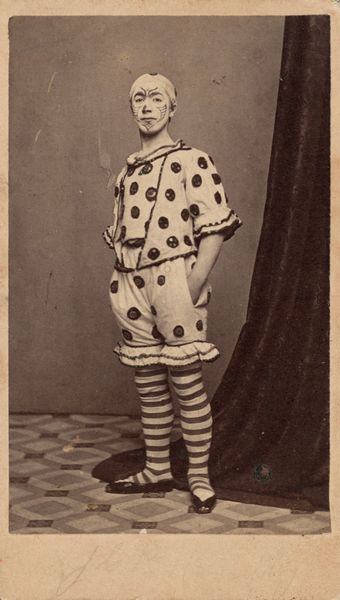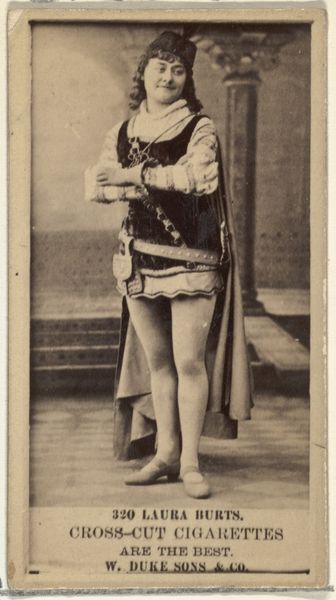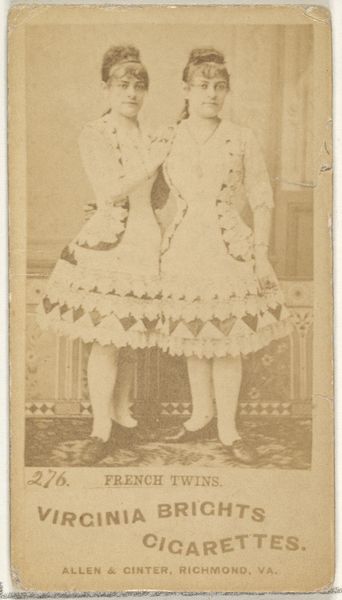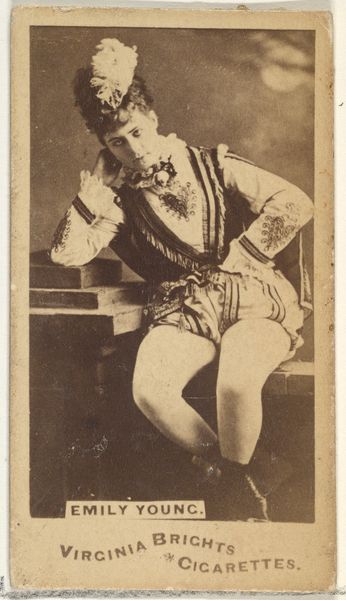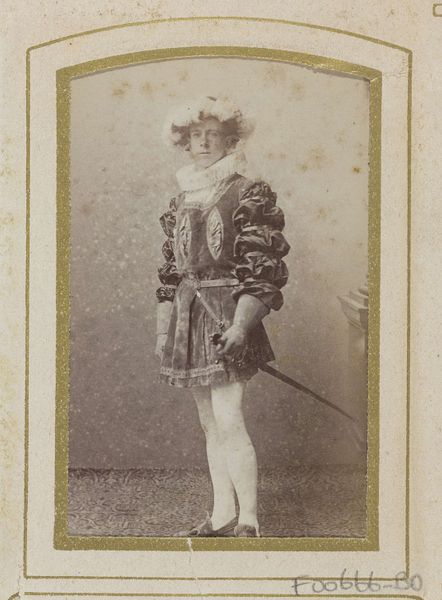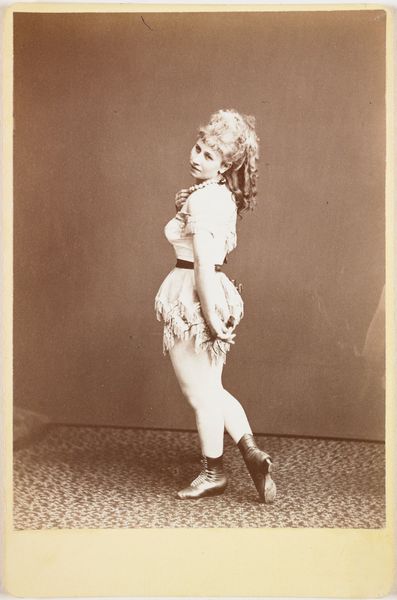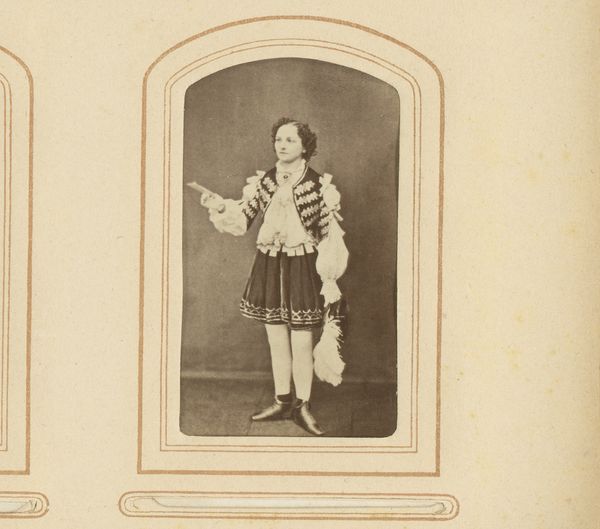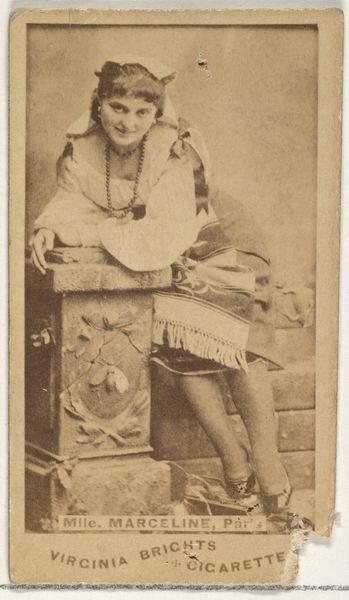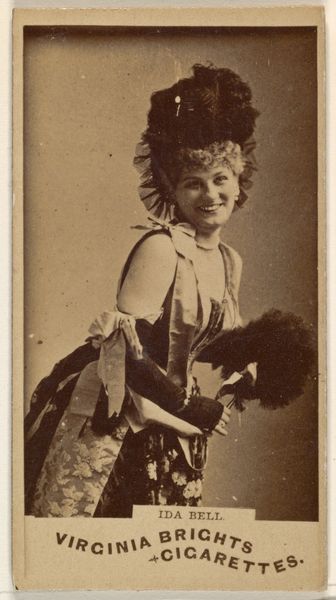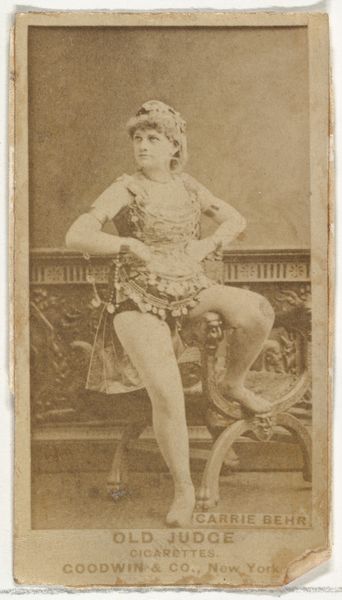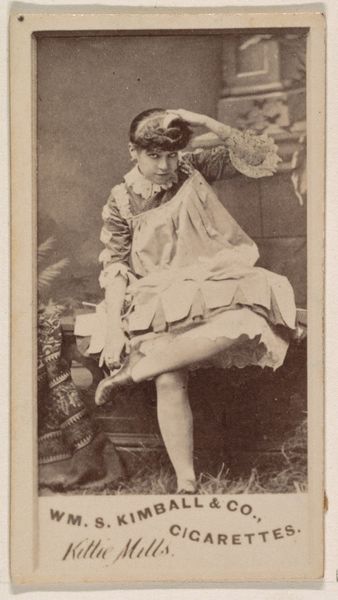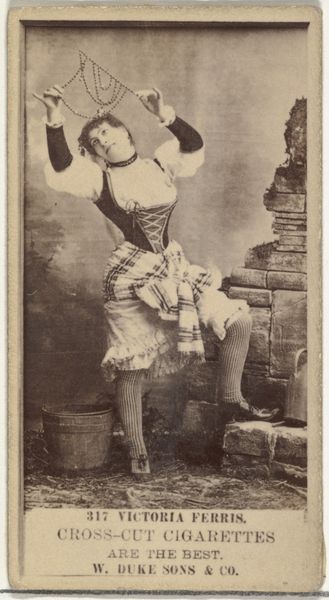
photography
#
photography
#
historical fashion
#
genre-painting
#
history-painting
Dimensions: height 376 mm, width 295 mm, height 428 mm, width 323 mm
Copyright: Rijks Museum: Open Domain
Curator: This is "Portret van een acteur," or "Portrait of an Actor," taken by C. Janssens in 1864 using photography. Editor: Oh, this has an immediately striking theatrical presence. The light catches the voluminous ruffles of his costume, creating an almost surreal weightlessness against the sepia tones. Curator: Indeed. The actor's flamboyant dress and the flower he delicately holds speak to the genre-painting tradition, reflecting history while being captured by this new medium of photography. Editor: It is remarkable how the rigid posture contrasts with the soft texture of his garb. His slightly askew gaze disrupts any illusion of grandeur, rendering the actor unexpectedly human. Semiotically, his finery screams prestige, but that small wilting flower in his hands hints at mortality. Curator: Yes, his theatrical persona serves to remind us of society’s changing values, moving from classic grandeur into modernity, mirroring broader societal transformations reflected by history painting. It captures an individual grappling with cultural identity. The historical costume itself has symbolic meanings related to courtly past times and performative values. Editor: His pose is a careful construction; see the sharp vertical created by his white hose juxtaposed against the horizontal stability of the cabinet behind him, grounding the whole scene. It subtly shifts our perception between action and rest. Curator: True. In the broader scope of things, images like this often acted as placeholders of status in an emerging public space. We are invited to think about identity presentation, something perpetually explored as cultural expression within ourselves as spectators and subjects of history. Editor: Thinking about composition and performance, it creates such a delicate interplay, doesn’t it? I think both that fragility and the actor’s commanding presentation are what draws me to the piece, structurally. Curator: I find the cultural context deeply moving. Looking at it today prompts self-reflection and how symbols transform through social and historical memory. Editor: An astute observation. Thank you. Curator: Thank you as well.
Comments
No comments
Be the first to comment and join the conversation on the ultimate creative platform.
